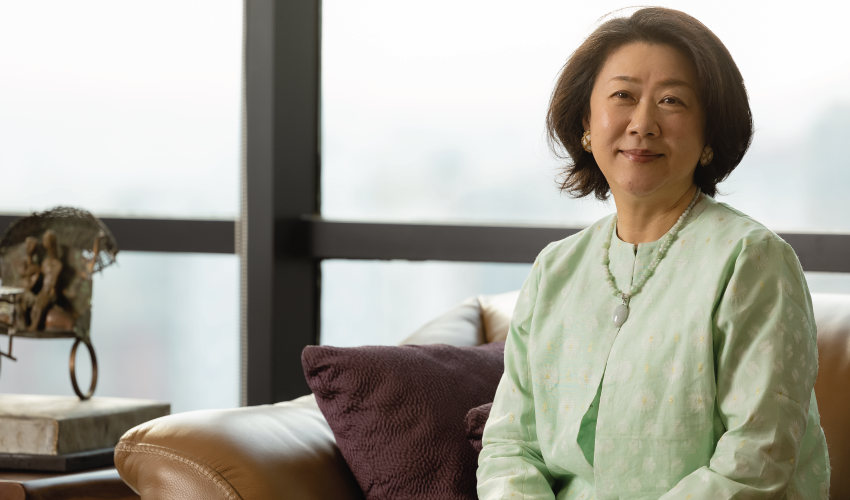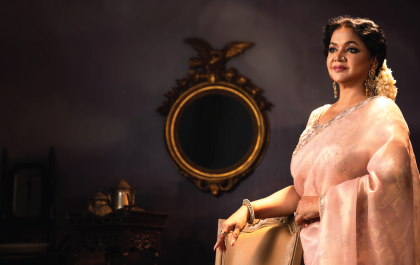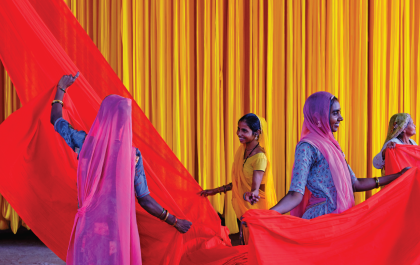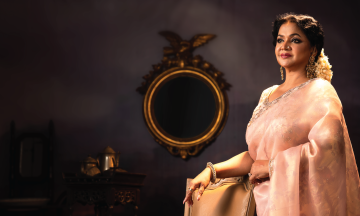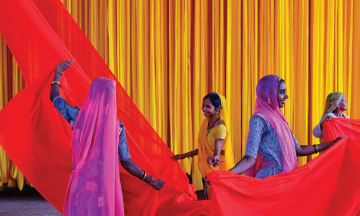Iwama Tomomi discusses her work for children
By MWB Desk
The first time MW Bangladesh interacted with Iwama Tomomi was at our Bengal in Motion event last year. The wife of the Japanese Ambassador was a standout in the beautiful kimono she wore to showcase her native culture.
For the photoshoot at the Samson Centre, days before the Ambassador’s transfer to Europe, she cut a striking look in an elegant co-ord set in seafoam Jamdani, which she paired with simple jade jewellery in the same shades. The ensemble spoke to the theme of cultural harmony, and the thought behind this sartorial choice was definitely not lost on us.
Ms Imawa has been busy these past two years during her husband’s tenure in Bangladesh, hosting and participating in events that further cultural ties between our two countries, such as the 23rd Annual Bonsai Exhibition organized by Bangladesh Bonsai Society, or the Ikebana demonstration jointly organized by the Department of Japanese Studies, University of Dhaka, and Ikebana International Dhaka Chapter 245, to name a few. In person, she proved to be the very picture of graciousness and self-effacement, deferring to Ambassador Iwama even in our interview of her. It was when we turned the spotlight away from her person and towards her causes that she finally began to open up. “After the revolution, we learned that there were children who had been traumatized by some of the events, and were still living in fear. So our group – we have a group of diplomat spouses – we talked about this issue, and wanted to do something for this country as foreigners. The adults were busy building the nation. We wanted to contribute something for the children, who will carry this country in the future.”
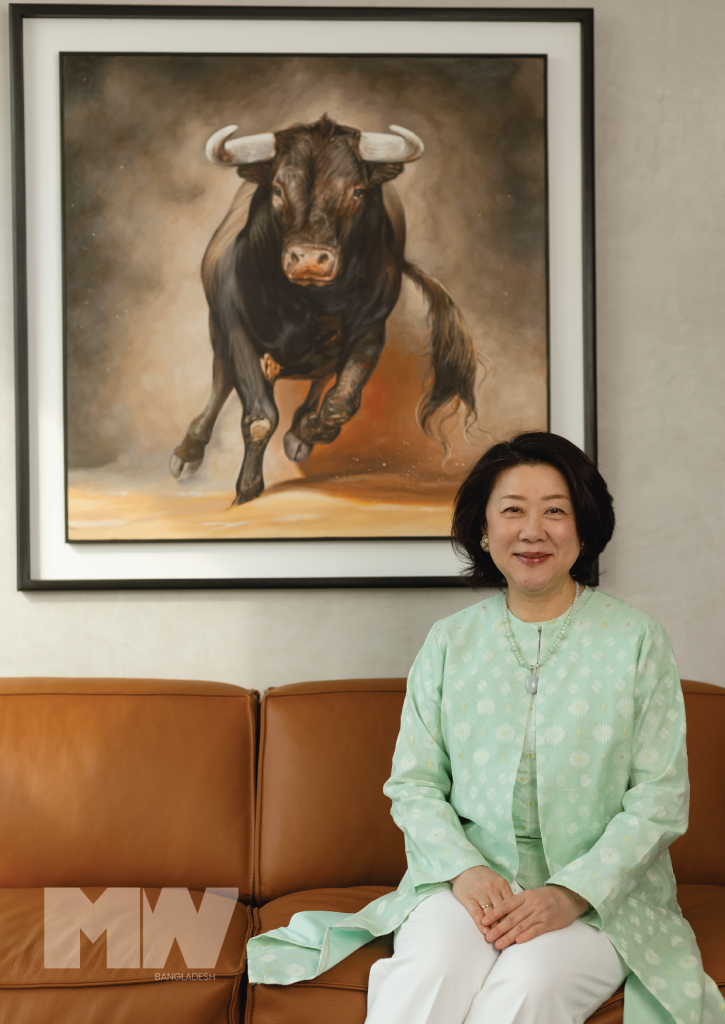
The group she was referring to was the SHOM (Spouse of the Head of Mission), and together with other diplomat wives, Ms Iwama decided on film screenings as a
healing activity. It was here that Ambassador Iwama informed us that his wife and daughter had worked for the KINEKO International Children’s Film Festival in Tokyo before, and they had contacts from that. A plan for the Japanese Film Festival was set and culminated in a screening of some short films for children. The event was organized in collaboration with the KINEKO International Children’s Film Festival, SHOM, and the Children’s Film Society Bangladesh.
The films Ms Iwama selected for the screening were short films intended to suit the attention spans of young viewers, and comprised of a combination of live-action and animated films with little to no dialogue so that the problem of translation wasn’t a big hurdle.
To add an interactive element to the screening, the organizers brought in interpreters to do live translations and voice acting, which Iwama Tomomi says was a little nod to an old Tokyo theatre tradition.
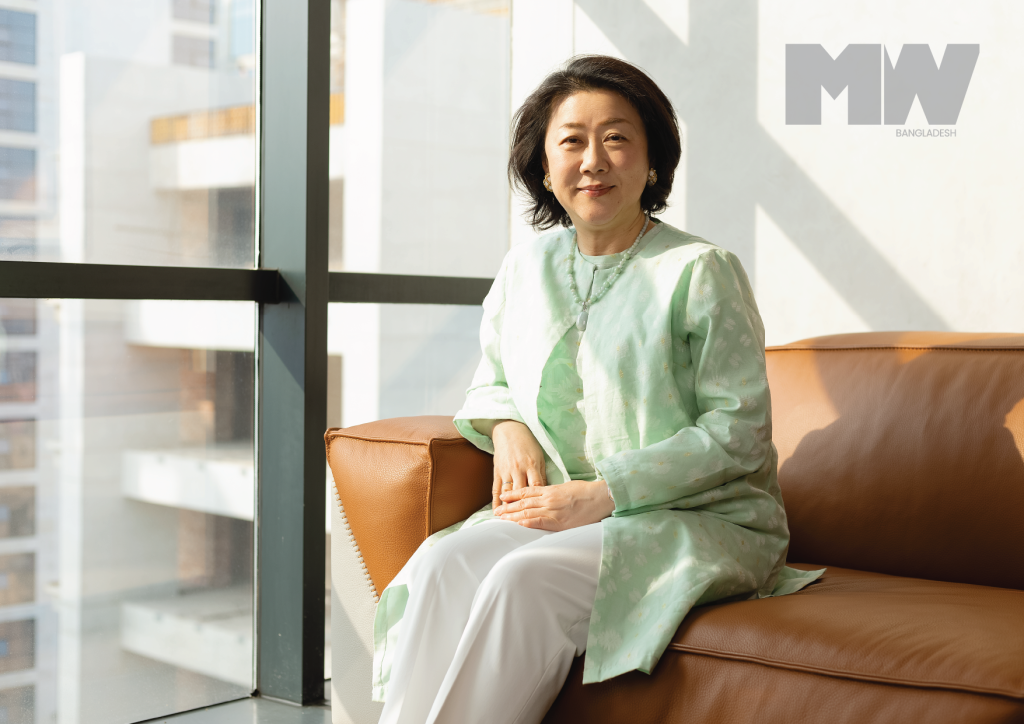
A pre-festival event was hosted by the Iwamas at the Japanese Embassy, and subsequent screenings were held at the Shishu Academy. Ms Iwama also arranged for a screening at the Abinta Kabir Foundation school, which was founded in the memory of Abinta Kabir, one of the martyrs of the terrorist attack in Dhaka in 2016, which resulted in a number of Japanese casualties as well. This was a beautiful way of healing together from the trauma of those events. “After each of the films we spoke to the children, and they shared that they learned that everyone has problems, and that they are not alone. This helped them feel more connected. It was certainly a lot of fun for us to listen to their stories and thoughts,” Ms Iwama shared.
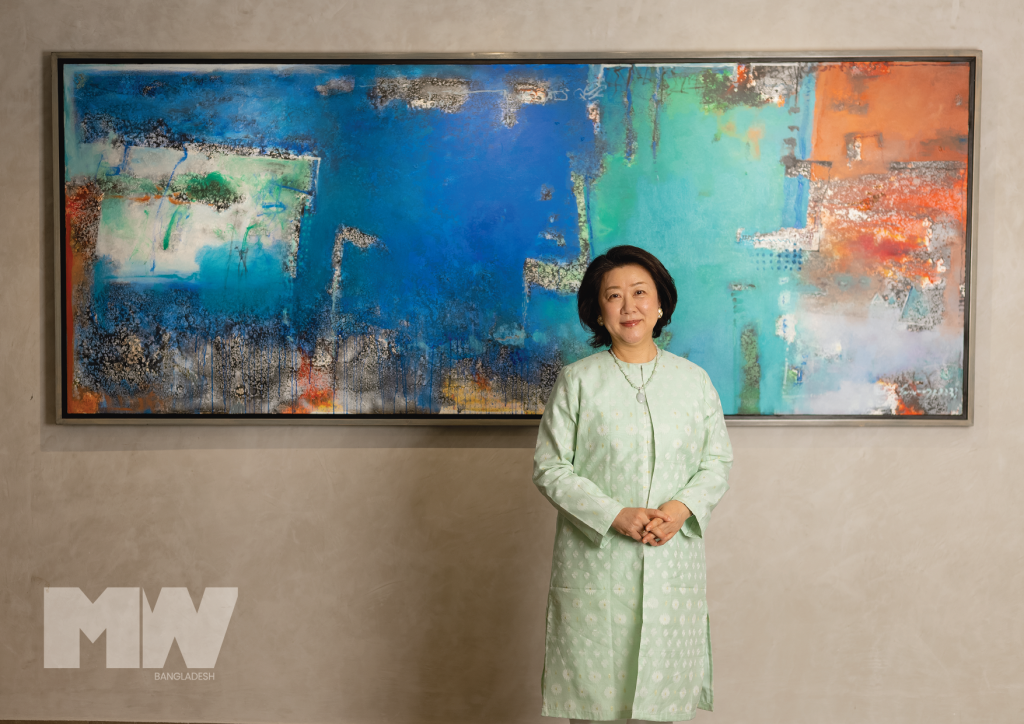
This wasn’t the first time Iwama Tomomi had turned to the arts to channel her support towards children. Iwama Kiminori was serving as the Japanese Consul General in Germany when the war in Ukraine broke out, and Germany was among the countries to welcome evacuees from the afflicted nation. His wife made use of her connections as a member of the American Women’s Club and later with the Japanese Society in Düsseldorf to organize and host two piano recitals to raise funds and awareness for the plight of the Ukrainian children in the conflict. I ask Ms Iwama where her passion for children’s issues comes from. She lets me know that after her work at the Ministry of Foreign Affairs (MOFA) in Japan – where she met her husband – she briefly worked part-time as a Maths teacher to a school for special needs children. “Art and music can provide an opportunity to evacuate oneself from reality,” she observed, and her experience of the impact of these as tools to help children informed her philanthropic ventures henceforth.
As we wrapped up our conversation, the relief on the Ambassador’s wife as the recordings were turned o was palpable. More animated now, she quizzed us on the vistas visible from our shoot location at the top of the Samson Centre, offered travel tips for those interested in visiting Japan, and professed an interest in visiting Italy someday soon. Wherever she goes next, one thing is for sure. Iwama Tomomi is going to find a way to use the arts to bring smiles to the faces of children.
Photographed by Salek Bin Taher




